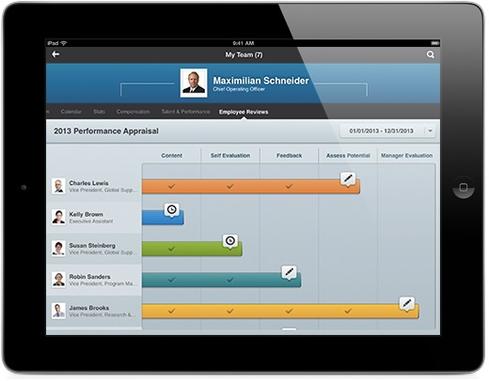Workday taps HTML5 to bring the look and feel of Google, Amazon, and LinkedIn to corporate apps on desktops, laptops, tablets, and smartphones.

Cloud-based enterprise applications vendor Workday announced Thursday that it's bringing a consumer-web-app look and feel to its human capital management and financial applications.
Expanding its use of HTML5 from mobile devices to the desktop, Workday says it's poised to deliver a clean look, better usability, and a consistent user experience to desktops, laptops, tablets, and smartphones. Going beyond interface design, Workday has also introduced an agile-development, test, and release approach that it says will improve the company's approach to introducing new features.
Workday's new look is already visible to customers in preview mode. Those who are ready to take it into production will be able to turn it on as soon as Feb. 3. Inspired by the likes of Google, Amazon, and LinkedIn, the new look is described as simple and utilitarian, with plenty of white space and user-friendly functionality. For example, as you start to type in names of workers, business processes, or transaction types, you'll see type-ahead suggestions, just as you do on Google. Personnel profiles in the HCM app make use of the kind of iconography and white space you see on Amazon or LinkedIn.
[How are competitors responding to Workday's progress? Read SAP Doubles Down On Cloud Computing.]
The new desktop and laptop experience makes use of HTML5 and does away with the Flash rendering previously used. Workday switched to HTML5 for its mobile web app, introduced 18 months ago, and it says the time was right to change the desktop experience.
"HTML5 has grown up a lot from the early days, and we can now do things like drag and drop, resizing, and touch-optimized experiences on the desktop as well as mobile devices," said Joe Korngiebel, Workday's VP of user experience, in an interview with InformationWeek.
Workday also has native apps for iPhone, iPad, and Android, but these, too, are said to be consistent with the mobile web app and new browser-based desktop/laptop experience. The new desktop/laptop look and feel will go live for all customers by April.
Thanks to Workday's new agile-development approach, which eliminates the separation between the vendor's development and production environments, users can experience the new interfaces in a preview mode using their own data, application configurations, business logic, and process flows. In the old approach, users could only preview new features by way of generic demos.
"Now customers can see how new features will work with their complete production system, and they'll find out in a preview mode, not a production mode, how it works for their environment," said Mike Frandsen, Workday's VP of products. This gives Workday better and more complete feedback on new features so they can iterate and improve functionality before a final release.
And on the topic of releases, on Thursday Workday also introduced Workday 21, the latest version of the company's HCM and Financials apps. Upgrades to the HCM app include more consistent functionality across desktop, tablet, and smartphone interfaces; new dashboards tracking compliance with the Affordable Care Act; and improved workforce scheduling functionality. Financials upgrades include improved reporting and drill-down exploration of data and a more Excel-like look and feel.
"At least 95% of our Financials users have [Microsoft] Excel on their desktops, and they like to be able to move financial information back and forth between Workday and Excel," said Frandsen. "We want to make sure that our UI looks and acts the same as when users export something into Excel."
Workday isn't the only enterprise applications vendor focusing on improving its user interfaces. SAP and Infor have also introduced modern, user-friendly interfaces with a consumer-web inspired look and feel. But where these are interfaces for the vendor's most in-demand interactions, Workday has brought an entirely new look and feel to all of its cloud-based applications.
Doug Henschen is executive editor of InformationWeek, where he covers the intersection of enterprise applications with information management, business intelligence, big data, and analytics. He previously served as editor-in-chief of Intelligent Enterprise, editor-in-chief of Transform magazine, and executive editor at DM News.
Interop Las Vegas, March 31 - April 4, 2014, brings together thousands of technology professionals to discover the most current and cutting-edge technology innovations and strategies to drive their organizations' success, including BYOD security, the latest cloud and virtualization technologies, SDN, the Internet of things, Apple in the enterprise, and more. Attend educational sessions in eight tracks, hear inspirational and industry-centric keynotes, and visit an Expo Floor that brings over 350 top vendors together. Register for Interop Las Vegas with Discount Code MPIWK for $200 off Total Access and Conference Passes.
About the Author(s)
You May Also Like







